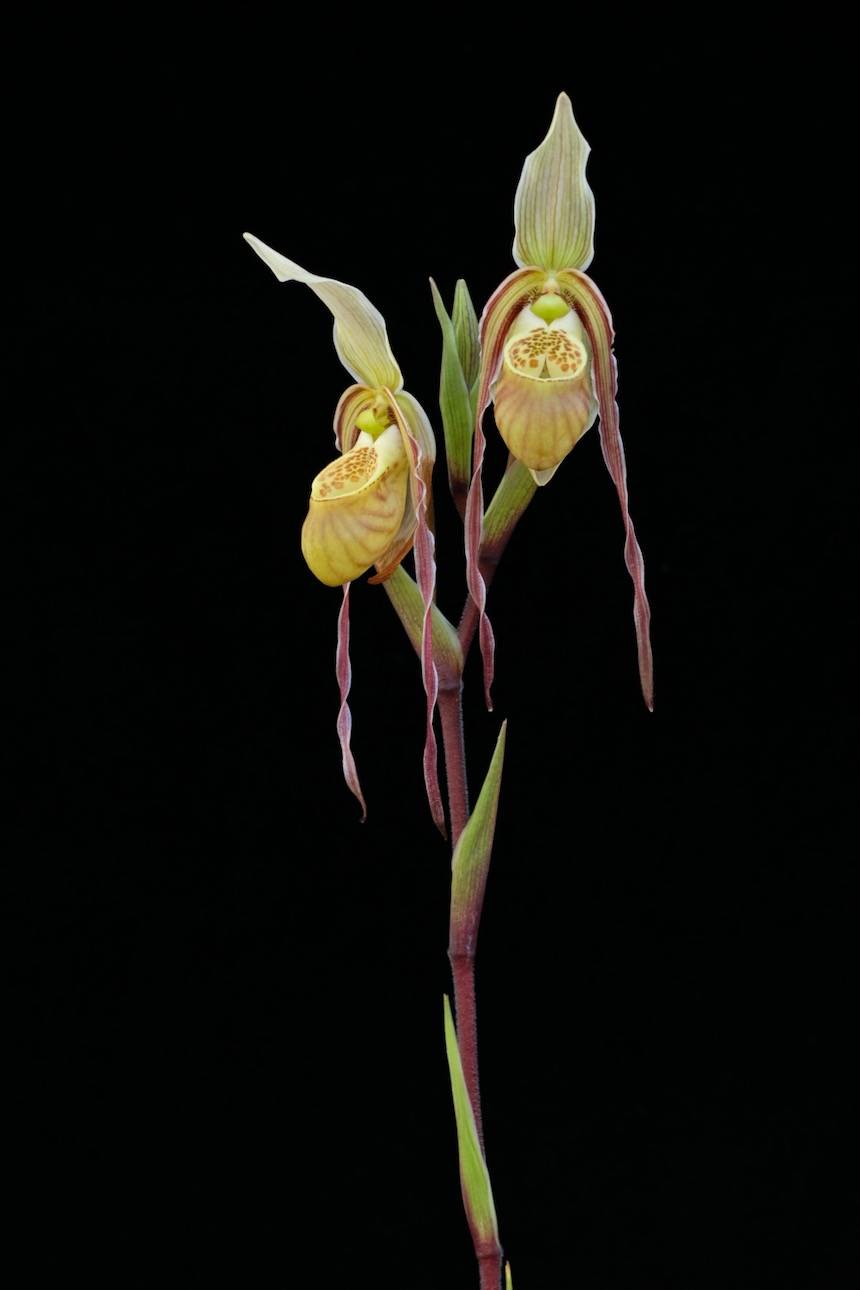Why am I calling this thread "Phragmipedium caricinum - Where have you gone Joe DiMaggio"? After the Simon and Garfunkel song Mrs. Robinson, wherein that question was asked. While we can debate the meaning of those lyrics, it is a good place to start when talking about Phragmipedium caricinum. When I started with Phragmipedium over 30 years ago, this species was common and easy to find. A popular parent was, and probably still is, "Aileen AM/AOS". However in recent years this species has all but disappeared from cultivation. A google search shows only one prominent slipper nursery selling seedlings. I know of a German Phrag. breeder selling seedlings. Those, however, are blooming out to be hybrids. There are a few plants in private collections, but those have become scarce as well. Where have you gone Phragmipedium caricinum? In nature, it is not rare, inhabiting rivers large and small on rocks below the high water line. When not in flower the plants cannot be distinguished from klotzchianum, hirtzii, pearcei, and cabrejosii. P. anchicayense is a synonym of hirtzii. All five (5) species in subsection Himantopetalum share identical ecology. Ecology helps us to define the species concept in the genus.
Each species can be distinguished by the unique pattern of spots on the claw face. Use of petals, twists, staminode, dorsal sepals, and other floral characters is all but useless, as variability and significant overlap makes use of those characters a fools errand. Caricinum has large, brown spots in the form of a triangle, similar in shape to a right triangle, on both halves of the claw face. An upcoming article in the Orchid Digest will do a deep dive into the subsection and have a species identification guide. But for now, take this at face value. There is no evidence to support the assumption that the staminode acts a lure for pollinators, let's take this out of our thinking. What does attract pollinators, parasitic wasps, is the pattern of spots on the face of the claw, which mimic aphids, the wasps preferred food source. Wasps hit the face of the claw and fall into the slipper and we all know how this works thereafter.
This is what decades long examination and study of natural populations can teach us. Our greenhouses are poor laboratories for study. Here are some photos of P. caricinum flowering in Bolivia. Stay tuned for more in the Orchid Digest. But first, in January, "The Phragmipedium of Brazil; A Journey to a Strange World".
Happy to answer any questions that are on topic.
These photos are copyright and my property. They are for express purpose of viewing and use on this website. Please do not reproduce, use, forward, or otherwise use these photos for any other purpose personal or commercial. I didn't put a watermark so we can all see the detail in the flowers and particularly the clay face clearly. If you want to include in a newsletter, catalogue, or lecture of your own please right me privately, I am always happy to share.
Best,
Each species can be distinguished by the unique pattern of spots on the claw face. Use of petals, twists, staminode, dorsal sepals, and other floral characters is all but useless, as variability and significant overlap makes use of those characters a fools errand. Caricinum has large, brown spots in the form of a triangle, similar in shape to a right triangle, on both halves of the claw face. An upcoming article in the Orchid Digest will do a deep dive into the subsection and have a species identification guide. But for now, take this at face value. There is no evidence to support the assumption that the staminode acts a lure for pollinators, let's take this out of our thinking. What does attract pollinators, parasitic wasps, is the pattern of spots on the face of the claw, which mimic aphids, the wasps preferred food source. Wasps hit the face of the claw and fall into the slipper and we all know how this works thereafter.
This is what decades long examination and study of natural populations can teach us. Our greenhouses are poor laboratories for study. Here are some photos of P. caricinum flowering in Bolivia. Stay tuned for more in the Orchid Digest. But first, in January, "The Phragmipedium of Brazil; A Journey to a Strange World".
Happy to answer any questions that are on topic.
These photos are copyright and my property. They are for express purpose of viewing and use on this website. Please do not reproduce, use, forward, or otherwise use these photos for any other purpose personal or commercial. I didn't put a watermark so we can all see the detail in the flowers and particularly the clay face clearly. If you want to include in a newsletter, catalogue, or lecture of your own please right me privately, I am always happy to share.
Best,
Attachments
Last edited:












